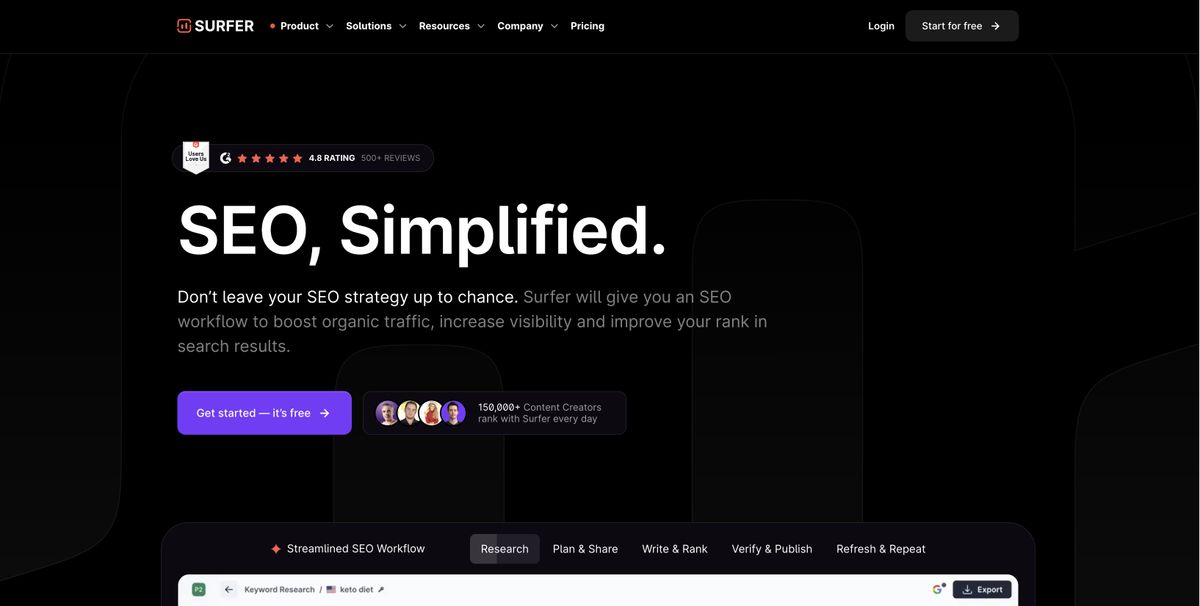As an SEO specialist and journalist, I’ve seen how vital search engine optimization (SEO) strategies are for driving high-quality website traffic. SEO remains one of the most effective, long-term strategies for ensuring your website attracts visitors and keeps them engaged. In this comprehensive guide, we’ll explore the role of SEO in maximizing website traffic and how you can implement these strategies to achieve substantial growth.
1. Understanding the Basics of SEO
SEO is about optimizing your website so that search engines like Google can easily find, understand, and rank it above competitors. It involves various techniques that focus on improving both on-page and off-page factors.
On-Page SEO:
- Keyword Research: Determine which keywords your potential customers are searching for. Tools like Google Keyword Planner, Ahrefs, and SEMrush can help identify high-traffic keywords.
- Meta Tags: Use targeted keywords in your title tags and meta descriptions. These should be compelling to encourage clicks.
- Content Quality: Produce valuable and relevant content that answers users’ questions. Incorporate keywords naturally and ensure the content is engaging and valuable.
- Internal Linking: Create a robust internal linking structure to guide users to related content on your website.
Off-Page SEO:
- Backlinks: Acquire high-quality backlinks from reputable websites. Guest blogging, partnerships, and influencer outreach can help you build valuable backlinks.
- Social Signals: Promote your content on social media to increase shares and social signals, enhancing your site’s visibility.
2. Technical SEO
Technical SEO focuses on the infrastructure of your website. A well-structured site helps search engines crawl and index your content more efficiently.
Key Elements:
- Site Speed: A fast-loading website offers a better user experience and ranks higher in search results. Optimize images, leverage browser caching, and use a Content Delivery Network (CDN).
- Mobile-Friendliness: Ensure your site is responsive and looks good on all devices. Google uses mobile-first indexing, so a mobile-friendly website is essential.
- XML Sitemap: Submit an XML sitemap to search engines to ensure all your pages are indexed.
- HTTPS: Secure your website with HTTPS to build trust and improve SEO.
3. Content Marketing and SEO
Content is the backbone of SEO. Creating high-quality, relevant content can drive organic traffic and establish your site as an authority in its niche.
Blog Posts:
- Regular Updates: Consistently publish blog posts about topics relevant to your audience.
- Evergreen Content: Focus on content that remains valuable over time, such as how-to guides and comprehensive industry analysis.
- Guest Blogging: Write for authoritative blogs in your industry to reach new audiences and gain backlinks.
Other Content Forms:
- Videos: Produce engaging videos to attract and retain an audience. Optimize video titles, descriptions, and tags with relevant keywords.
- Infographics: Use visually appealing infographics to present data engagingly.
- Podcasts: Start a podcast to discuss industry trends and connect with your audience in a different format.
4. Local SEO
For businesses targeting local customers, local SEO is crucial for driving relevant traffic.
Techniques:
- Google My Business: Claim and optimize your Google My Business profile with accurate contact details, business hours, and location.
- Local Keywords: Incorporate local keywords into your content to attract geographically relevant traffic.
- Customer Reviews: Encourage satisfied customers to leave positive reviews and respond to all reviews professionally.
- Local Listings: Ensure your business is listed on local directories and review sites.
5. User Experience (UX) and SEO
User experience (UX) is closely tied to SEO. A seamless UX keeps visitors on your site longer and encourages them to engage with your content.
Focus Areas:
- Responsive Design: Ensure your website is mobile-friendly and looks good on all devices.
- Fast Loading Times: Optimize images, leverage browser caching, and use a CDN to improve site speed.
- Easy Navigation: Simplify your website’s navigation to help users quickly find what they’re looking for.
- Engaging Design: Use aesthetically pleasing designs and interactive elements to maintain user interest.
6. Analytics and Adaptation
Regularly analyzing your website’s performance and the effectiveness of your SEO strategies allows you to make informed decisions and optimize for better results.
Tools:
- Google Analytics: Track key metrics like page views, session duration, bounce rate, and conversion rates.
- Google Search Console: Monitor your site’s search performance and fix any issues related to crawling and indexing.
- Heatmaps: Use tools like Crazy Egg or Hotjar to visualize user interaction with your site.
- A/B Testing: Experiment with different versions of web pages, headlines, and calls to action to determine what performs best.
7. Social Media and SEO
Social media can increase your website traffic when integrated effectively with your SEO strategy.
Strategies:
- Content Sharing: Regularly share your blog posts, articles, and videos on social media platforms like Facebook, Twitter, LinkedIn, and Instagram.
- Engage with Followers: Respond to comments and messages promptly. Use interactive content like polls, Q&A sessions, and live videos.
- Hashtags: Use relevant hashtags to increase your content’s visibility.
- Social Media Ads: Run targeted ads on social media platforms to reach a larger audience and drive traffic to your site.
8. Building Authority through Backlinks
Backlinks from reputable websites signal to search engines that your content is credible and valuable, improving your rankings.
Techniques:
- Guest Blogging: Write articles for authoritative blogs in your industry to get backlinks and reach new audiences.
- Partnerships: Collaborate with other businesses and websites to create mutually beneficial content and link exchanges.
- Broken Link Building: Find broken links on other websites and suggest your content as a replacement.
9. Harnessing the Power of Influencer Marketing
Influencer marketing can drive significant traffic to your website through established audiences.
Strategies:
- Identify Relevant Influencers: Partner with influencers whose followers align with your target demographic.
- Content Collaboration: Work with influencers to create content they can share with their audience.
- Affiliate Programs: Set up affiliate programs where influencers earn commissions for driving conversions.
- Measure Campaigns: Use analytics to track the performance of influencer campaigns and optimize your strategy.
10. Retargeting
Retargeting allows you to bring back visitors who have previously engaged with your website but didn’t convert.
Tips:
- Segment Your Audience: Target users based on their behavior on your site, such as the pages they visited or the products they viewed.
- Personalized Ads: Create ads that remind visitors of the value they found on your site.
- Frequency Capping: Set limits on how often users see your retargeting ads to avoid overwhelming them.
Case Study: The Role of SEO in Action
Company Background: A mid-sized eCommerce business specializing in sustainable lifestyle products.
Strategy:
- SEO & Content Marketing: The company focused on creating high-quality blog content about sustainable living. They optimized their website for relevant keywords and enhanced their backlink profile.
- Social Media Integration: Active engagement across Instagram and Facebook, sharing posts with solid visuals and interactive stories.
- Email Campaigns: Personalized newsletters featuring new products, exclusive offers, and industry news were sent to segmented email lists.
Outcome:
Within six months, the company saw a 50% increase in organic website traffic and a notable rise in sales. The optimized content attracted more engaged visitors, and the integrated social media and email campaigns maintained customer interest.
Conclusion
Maximizing website traffic through SEO involves a multi-faceted approach that combines various techniques. By mastering SEO fundamentals, improving the technical aspects of your website, creating high-quality content, leveraging social media, and continuously analyzing performance, you can attract and retain high-quality visitors. These strategies will boost your organic website traffic, build a loyal audience, and ensure long-term success. Stay adaptable, monitor your progress, and refine your strategies based on data insights to stay ahead in the dynamic digital landscape. The key to success lies in persistence and the willingness to evolve with changing trends.





